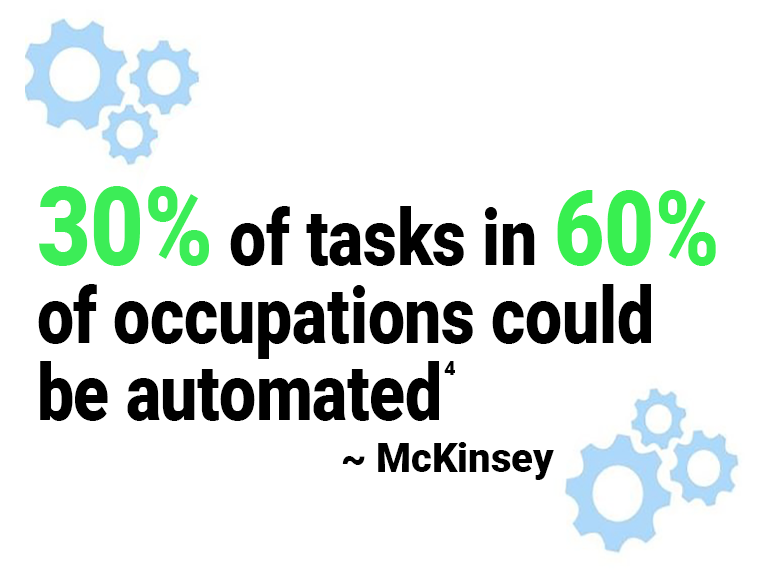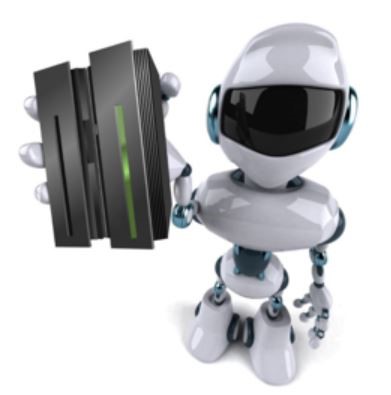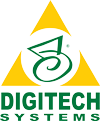Grand View Research estimates that global RPA sales topped $1 billion last year, and they’ll continue to grow at a 33.6% annual rate through 20271.
With a technology growing this rapidly, sometimes it can be hard to understand exactly what it is. Perhaps you’re wondering how it might help your organization but are unsure where to start. We frequently get asked about RPA, because it’s one of the technologies available in our document management suite of products. Keep reading for a straight-forward explanation of what RPA is, which business processes most benefit from it, and what kind of returns your organization should realistically expect from an investment in RPA.
What is Robotic Process Automation?
To understand Robotic Process Automation or RPA, we need to step back to a larger category of business technologies called Business Process Automation (BPA). For almost thirty years, BPA companies have offered technologies such as imaging (scanning applications that help convert paper documents into digital files) and workflow (to automatically route documents from step to step in a business process). Where processes involved more than one application, integrations were coded to allow the applications to share data and exchange information.
By 2026, 30% of enterprises will automate more than half of their network activities, an increase from under 10% in mid-2023. 2
Due to this integrations have become more sophisticated, RPA emerged. RPA uses “bots” (electronically controlled software user accounts) to log into applications and perform routine tasks like data entry or researching and correlating information across multiple systems, replacing the human effort previously required. Now, instead of routing information from human to human to perform the tasks required to complete a business process, RPA allows companies to automate both the routing of information and the tasks themselves.
As businesses adjust to rising technology expenses and unprecedented data growth, microservices architectures and Robotic Process Automation (RPA) are emerging as top priorities for those looking to maximize efficiency and savings. Demand for leaner, more flexible technology platforms is driving interest in microservices architecture and modular automation tools as must-have capabilities for the coming year with an emphasis on reducing overhead in high-volume processes such as Accounts Payable (AP) and Human Resources (HR) automation.
The logic behind this trend is straightforward. Legacy solutions often come bundled with capabilities that go mostly unused (often as much as 80% of the features3 ), which drives up costs and complexity. By contrast, microservices enable organizations to deploy only what they need, precisely when they need it, and RPA automates mundane tasks prone to human error. This modular, on-demand approach refines technology costs to a model known as microtransactions-based billing, in which companies pay strictly for the capabilities and process minutes they consume.

The following processes are the ones most often targeted for automation. How might faster, smarter processes in any of these areas benefit your company?
- Financial operations such as invoice processing and billing
- Human resources such as onboarding new employees and tracking benefits
- Information technology such as diagnosing and fixing many common technical problems
- Procurement such as requisitions, MRO re-orders, and inventory management
- Data and analytics such as monitoring and analyzing information about efficiency, issues, and costs
Modular Automation: An Essential Strategy for 2025
Sometimes called a “composable” or “consumption-as-a-service” approach, modular technologies break software into smaller feature bundles. Each bundle—or microservice—addresses a specific business task or need, and these bundles can be turned on and off to dynamically respond to changing business needs. Microservices also enables usage-based billing on select services like RPA and workflow, so companies pay only when the products are in-use. When applied to automation products, such as workflow or RPA, a microservices architecture streamlines process setup and adjustments, improves business adaptability and efficiency, and reduces overall costs by aligning technology costs with usage.

One analyst predicts that by 2026, most top SaaS vendors will feature modular capabilities in their product lines, effectively competing on the convenience and flexibility of their microservices. According to Gartner, 60% of new SaaS designs will support API-first access by next year, reflecting a market-wide push toward composability.2
“Microservices and RPA democratize automation,” explained HK Bain, CEO of Digitech Systems. “You no longer have to be a Fortune 500 company with an enterprise-sized budget to get sophisticated automation. Now, midmarket and smaller organizations can experiment in small increments, learn fast, and scale up only when they see results.”
These trends point to an era where custom-tailored automation—cost-aligned to actual usage—becomes the norm. In 2025, business need to pivot quickly or risk falling behind. For many, that means directing a significant portion of IT and process-improvement budgets toward microservices, RPA, and intelligent information management initiatives that scale on demand.
Sys.tm Automations costs just $1/mo and $312/yr for an interactive bot, or $832/yr for an unattended bot, versus a typical knowledge worker who makes $62,000.5
Automation Impacts Your Bottom Line
Workflow (process automation) and Robotic Process Automation/RPA (task automation) are both well-established technologies. What’s new for 2025? Low-code/no-code platforms are emerging to enable both task and process automation at significant benefit to businesses. Low-code/no-code systems have intuitive user interfaces and a visual/graphical layout tool, so any employee can make updates. These systems eliminate the need for expensive IT resources (who often don’t understand business workflows) to get involved in initial automation setup or ongoing updates. Low-code/no-code democratizes automation expanding the benefits for organizations.

Which types of automation offer big benefits? Slow invoice approvals can cost a company significantly in wasted employee effort and lost financial discounts. AP processes benefit significantly from AI tools that automatically extract information from invoices so it can be accurately entered into financial systems. In addition, the flow of invoices through multiple verifications against purchase orders and goods received receipts as well as through the various workers involved in approvals saves significant employee time not only for the approvers but also for finance employees who no longer have to track down signatures or verifications.
Explore Your Savings and Transform Workflows
To help evaluate and calculate how modular automation could transform business operations, Digitech Systems offers interactive tools and resources:
- Business Process Automation Calculator: Click here
- How much are manual AP processes really costing your company? Click here
- How Can Automation Improve HR? Click here
Learn more about our technologies online at www.sys.tm and www.digitechsystems.com.
About Digitech Systems, LLC
Digitech Systems is the most trusted choice for intelligent information management and business process automation. Preferred by thousands of businesses worldwide from global conglomerates to Main Street, teams count on Digitech Systems to pave the path to more meaningful work by transforming how they handle digital files, processes, documents and more.
Endnotes:
1 Grand View Research (2020). Robotic Process Automation Market Trends.
2 Gartner (2019). Gartner Says 30% of Enterprises Will Automate More Than Half of Their Network Activities by 2026.
3 Thomas, Suja (2019, Feb 5). 2019 Feature Adoption Report.
4 Mckinsey (2015). Considerations for Implementing Robotic Process Automation.
5 the U.S. Bureau of Labor Statistics (Jan 2025). Usual Weekly Earning of Wage and Salary Workers.
Related Links
- Click here to see many resources that can teach you more about RPA.
- For a quick overview, check out this RPA infographic.
- Learn how businesses are adjusting to rising technology expenses.
- Want to see RPA in action? Check out this brief video presentation.

Contact Info
+1 866.374.3569
Email Support
Email Sales
Daily: 8:00 am - 6:00 pm CST/CDT
Saturday & Sunday: Closed
Copyright © 2025 Digitech Systems, LLC - All Rights Reserved